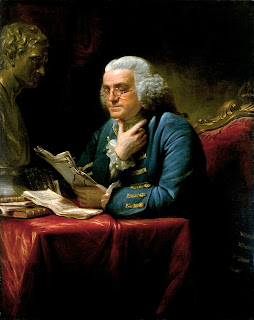Greatness is a Choice
Greatness
is not a function of circumstance rather it is a matter of choice. We
cannot predict the future but we can create it. That is the principle outlined
in the classic Great by Choice. The authors Jim Collins and Morten Hansen
studied companies that thrived under immense uncertainty bordering on chaos.
How these 10X companies (Microsoft, Biomet, Intel, Stryker, Southwest
Airlines, Progressive Insurance, and Amgen) came through this extreme
environment is the basis of this study. Keep in mind the study was how the
companies performed till 2002 that was the cut off for the research. They
studied dynastic performance which ended in 2002.
Considering
what had happened to the airline industry with deregulation, recession,
hijackings, bankruptcy and the September 11th 2001 terrorist attacks it was
indeed amazing that in spite of all this Southwest Airlines returned a profit
every single year and they were the only airline to do so. This stood in stark
comparison to Pacific Southwest Airlines which capitulated in the same
conditions. These companies which thrived under extreme uncertainty were called
10X companies and the leaders of these companies were called 10Xers. They
displayed three key qualities fanatic discipline, productive paranoia, and
empirical creativity.
The
book starts with the journey of two explorers in the year 1911 that were trying
to reach the South Pole (I read about the same thing in John Maxwell’s 21
irrefutable laws of leadership as well in the chapter on law of navigation).
The winner was Roald Amundsen the Norwegian explorer and the loser was Robert
Falcon Scott of Great Britain. Roald Amundsen prepared with monomaniac
discipline. He practiced eating raw dolphin meat just in case he was ever
shipwrecked, observed the Eskimos even taking their clothing, for a trip from
Norway to Spain to get a masters certificate he bicycled, he used dog sleds and
he killed the weaker dogs to feed the stronger dogs. In contrast Robert Falcon
Scott used ponies which sweat on their hides, used motor sledges which had not
been tested in extreme conditions, didn't have enough food planned for the
conditions and didn't prepare with Eskimos.
The
moral of the story is what you do before a storm hits that will ultimately
determine your ultimate success. Are you more like Amundsen or Scott? Amundsen
famously said “Victory awaits him who
has everything in order — luck, people call it. Defeat is certain for him who
has neglected to take the necessary precautions in time; this is called bad
luck.”
Here
are the major principles I liked in the book
20 Mile March: My 20 mile march is to exercise every
day and I don’t deviate from that even if I am travelling. The key for a good
20 mile march is to have a lower bound but at the same time not going too far
as well. For example Amundsen went nearly 17 miles every day including bad days
whereas Scott went too far on good days and didn't go at all on bad days.
Southwest ensured it didn't grow too much or too fast always maintaining
consistency. Some of the key elements of a 20 mile march are clear performance
markers, self-imposed constraints, a proper time frame, and measures achieved
with great consistency.
This is the principle which details fanatic discipline.
Fire Bullets then Cannon balls: The main principle always make sure you fire bullets before
doing something big. A bullet is low risk, low cost and if it fails the
organization is not severely impacted. An example is the Apple Stores concept.
Steve Jobs brought in the expert Mickey Drexler then CEO of GAP to the Apple
board. Mickey advised to first do a prototype of a store before launching. Steve
Jobs brought in retailing expert Ron Johnson to help him build the prototype.
They designed, tested, redesigned until they had the model they wanted. Only
then did they expand the stores across various locations. This was also
well documented in the Steve Jobs biography by Walter Isaacson. You can also do
this in your personal life. For example if you want to run a marathon do one 5k
race, then 10k, then a half marathon before attempting a full marathon.
This is the principle which details empirical creativity.
Leading above the Death line: An example provided here is David
Breashears who was the first to shoot an IMAX film at the top
of Mount Everest. The main story is on May 8th 1996 sensing
conditions were not right he headed down to base camp instead of proceeding
further on his expedition. However on the way down he saw an expert mountain
climber Rob Hall and few others who actually proceeded and finally when David
reached the summit successfully on May 23rd 1996 he found them frozen on
the way up (This was the infamous blizzard at Mount Everest on May 10th 1996
which killed eight climbers). The key lesson from this principle is you
must prepare for bad events before they occur and you must be able to sense
conditions when they do change. This is translated into building cash
reserves and buffers which are oxygen canisters to prepare for bad events
should it occur. For example Southwest always had healthy cash in hand and they
never overplayed the market. The main point of this principle is that the
10X companies took less risk than their comparison counterparts. Another
strategy outlined was Zoom out and then Zoom in. Zoom out of the situation to
view upcoming changes remaining hyper vigilant in changing conditions and then
Zoom in to respond effectively.
This is the principle which details productive paranoia. The key
question to ask all the time how much more time before the risk profile
changes.
Specific, Methodical and Consistent (SMaC): An
example provided is the 10 point formula by Howard Putnam in 1979 for Southwest
Airlines which didn’t change much over a period of 20 years.
Another
analogy provided is the US constitution which was amended only a handful
of times in more than 200 years after the initial Bill of Rights. That is the
key of a SMaC recipe something that keeps the core intact and requires minimal
change.
Return on Luck: Finally yes there is a chapter on
luck and what role it played. I believe this is the most scientific research
done on luck. Collins and Hansen defined luck as an event that meets three
tests: (1) some significant aspect of the event occurs largely and entirely
independent of the actions of the key actors in the enterprise. (2) The event
has a potentially significant consequence and (3) the event has some element of
unpredictability.
The
basic thesis is that both 10X companies and their comparison counterparts had
luck but the key factor is the 10X companies got a greater return on luck by
consistently doing a 20 mile march, consistently firing bullets then
cannonballs and displaying productive paranoia. On an individual level Bill
Gates is considered lucky to have been born at the right time into an upper
middle class family, going to a great school which had access to computers
not a normal occurrence during his time and read the Popular Electronics
magazine at the right time. The key point is he was not the only one in his era
to have had these opportunities but he was the one who had a great return on
the luck. My own view is he did more with his
luck through a combination of sheer tenacity, risk taking, questioning the
status quo and fanatical discipline. It is not the cards you
are dealt but how you play with the cards dealt that is the key.
I
was very inspired after reading this and I believe all the principles can
apply to individuals as well as companies. I first read this book 2 years back
and have subsequently reread it quite a few times. On a personal note one of my
favorite authors is Jim Collins and I believe he is one of the foremost
management thinkers alive.








Comments
Post a Comment